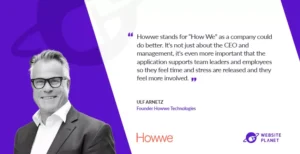In today’s fast-paced world, decision-makers and CEOs face their biggest challenge – shortening the time from decision-making to actual execution of strategic initiatives. It’s no secret that this is a critical factor in achieving success and staying competitive. Unfortunately, we are witnessing a concerning trend where decision-makers from all sectors—be it government, education, healthcare, nonprofits, media, military, or religious organizations—demand increased digitization from their employees, subordinates, or community members but continue to work in an analog manner themselves.
Time – Our Most Valuable Asset
Time is an irreplaceable resource and our most valuable asset. We cannot gain more time, but we can use it more intelligently. Understanding the value of calendar time and its consequences enables us to catalyze changes that will enhance our results. Shortening the time from decision to goal attainment means we can quickly reap both the economic and human benefits according to our decisions.
For example, international organizations like the United Nations could execute climate change initiatives so that carbon dioxide reductions occur 30% faster, or potentially five years ahead of current projections. Similarly, NATO could expedite its humanitarian and peacekeeping initiatives to react more swiftly to crises. High-impact charity organizations like Doctors Without Borders and Save the Children could save millions more children if the time between fundraising and field action were minimized. In the more local context, a Swedish municipality could make decisions that not only improve public services but also address sustainability issues much faster—carbon dioxide could be curbed 30% quicker, or for example, five years sooner than expected.
It’s not the capability that’s lacking; it’s the behavior of decision-makers. By understanding and optimizing the value of time, these organizations could serve as powerful examples of how prompt decision-making can translate into accelerated, impactful action.
Transition from Analog to Digital
As leaders, you have probably heard about the importance of digitization to drive progress. However, it’s not enough to merely demand this from others – CEOs must also embrace digital tools that can accelerate and measure the execution of strategic initiatives. Through modern digital solutions, you can shorten the time to results and make the entire process more measurable.
Accelerated Execution – A Collective Effort
As a decision-maker or CEO, you have a tremendous opportunity to influence and lead the entire organization. By using digital support for accelerated execution, you can not only steer and focus the organization from top to bottom but also from bottom to top. All stakeholders can work together to shorten the time from decision to desired outcomes. Instead of waiting for quarterly reports or year-end results, you can have daily or weekly insights into progress toward goals.
Measurable Improvements – An Investment in the Future
Investing in a digital application and weekly acceleration meetings is a minor effort compared to the increased efficiency and improved results that can be achieved. By making execution more measurable, you can quickly identify and address challenges that may arise. External changes such as wars, conflicts, inflation, and natural disasters may require adjustments, and with digital tools, you can be proactive and react swiftly.
Measure “Input” to Optimize “Output”
To succeed in strategy execution, we must focus not only on “output” – i.e., what we have achieved – but also on “input” – the activities required to reach our strategic goals. By motivating, directing, and measuring these activities, we can accelerate progress and ensure that we achieve the most crucial objectives on time.
Creating a Collective “We” Feeling
For companies, aid organizations, governments, or municipalities to succeed, individuals must reach their full potential. By utilizing modern digital support for accelerated execution, everyone can feel part of a collective “we,” where successes and progress are clear and measurable. This not only leads to increased motivation and engagement but also to a stronger and more successful organization.
90% of all organizations fail to execute their strategies
According to a study presented by Intellibridge, approximately 90% of all organizations fail to execute their strategies successfully. This staggering statistic highlights the significant challenges that companies face when it comes to turning strategic plans into tangible results.
Forbes also shed light on this critical issue, emphasizing that strategy execution remains one of the biggest unsolved problems in the business world. Many companies struggle to bridge the gap between formulating strategies and effectively implementing them, leading to missed opportunities and potential failures.
These statistics serve as a wake-up call for decision-makers and CEOs to take a proactive approach in addressing the shortcomings in strategy execution. Embracing modern digital support for accelerated execution can be a potential solution to improve the success rate and drive organizations towards achieving their goals in a timely and measurable manner. By using digital tools to track progress, measure inputs, and optimize outputs, companies can increase their chances of successfully executing their strategic initiatives and staying ahead in today’s competitive landscape.





